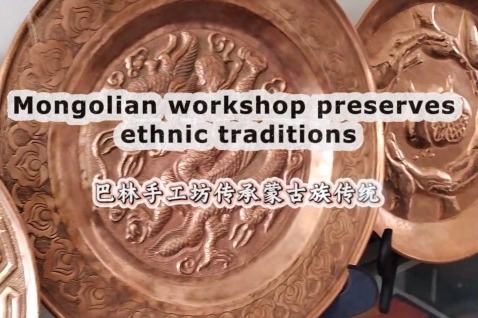History of martial arts underlines the special ties that bind

Talk has increased recently of the need for deeper regional cooperation among China, Japan and South Korea, to coordinate efforts to fight the COVID-19 pandemic and mitigate its economic impacts on the region.
The history of Asian martial arts demonstrates the close ties these three nations have long shared, and shows how ancient commerce nurtured the cultivation of these arts, which are now known worldwide.
During my self-quarantine period, I had a chance to reflect on the historical trilateral relations as I practiced the martial arts of the three countries and reviewed their history.
I have trained since I was a teenager in the Korean art of taekwondo (I hold a second-degree black belt). I later learned Okinawan karate before eventually furthering my longtime study of tai chi by training in China.
The interconnectedness of these arts highlights the enduring relations of the three countries.
In the late 18th and early 19th centuries, Chinese martial arts practiced in Fuzhou, Fujian province, spread to Okinawa, once part of the Ryukyu Kingdom (but now a Japanese prefecture) that relied heavily on trade with China.
The Chinese arts were enhanced with elements of Okinawa's indigenous martial arts before reaching Tokyo in the early 20th century. There, they became known generically as karate (at first translated as "China hand" but later, using the same Kanji characters, interpreted instead as "empty hand" to reflect the art's weaponless nature).
Before and just after World War II, the Japanese version of these arts of Chinese origin found their way to Korea, where they were further modified to include elements of indigenous Korean arts. This led to the creation of taekwondo in the mid-1950s.
A common love for the character-building nature and physical strength engendered by these martial arts, as well as their deep-rooted spiritual elements, has long bound the nations together.
Instances of political strife between the countries caused gaps in the historical narrative of the martial arts, but through the years I was able to discover clues that completed the picture.
For example, I attended a large global gathering of karate enthusiasts in 1989 in San Diego, California, that was hosted by my Okinawan karate teacher, the well-known Sensei Morio Higaonna. It was here that I met his teacher, the heir of (but no relation to) Chojun Miyagi, the founder of Goju-ryu karate and the namesake of Mr Miyagi in The Karate Kid.
Also among those in attendance was Hirokawa Kanazawa, a celebrity in Japanese karate circles and a personal hero. While just 12 years old, when I was often bullied at school, I came into possession of a book about karate that featured Kanazawa's impressive techniques. I was greatly inspired to learn this art, hoping to vanquish the bullies (which I eventually did).
Kanazawa, I learned much later, had not only studied with Gichin Funakoshi, known as the founder of modern karate, but at one time had accompanied the aging master on his travels to various universities where he taught in Japan.
At that same San Diego event, I also spoke with a noted karate master who had been a kamikaze pilot at the very end of World War II (his barely airworthy plane had crashed after takeoff, badly injuring him). I asked him why the practice routines of my Korean taekwondo style were so similar to those of Funakoshi's Shotokan style from Tokyo.
The master, who also had studied with Funakoshi, was most helpful. He told me the Korean masters of the time, including the teacher of Duk Sung-son (who awarded me my first-degree black belt and was one of the founders of taekwondo), had gone to Japan to study with none other than Funakoshi himself. This was something my own Korean master had never mentioned.
Everything came full-circle during my Beijing self-quarantine when, in the search for a robust exercise routine, I renewed my long love for the aggressive practice form known as the "iron horse". This powerful, traditional training routine originated in China, was embraced in Okinawa 200 or 300 years ago, became a key part of Japanese karate, then worked its way to the training halls in Seoul (and eventually was taught to me in the 1970s in Omaha, Nebraska).
It's abundantly clear, even to an outsider like myself, that the roads connecting China, Japan and South Korea, though paved long ago, were solidly laid. So it shouldn't be difficult to rediscover the astounding depth of the trilateral ties, and their global reach, as the three nations rally to weather the coronavirus storm and its aftermath.




































